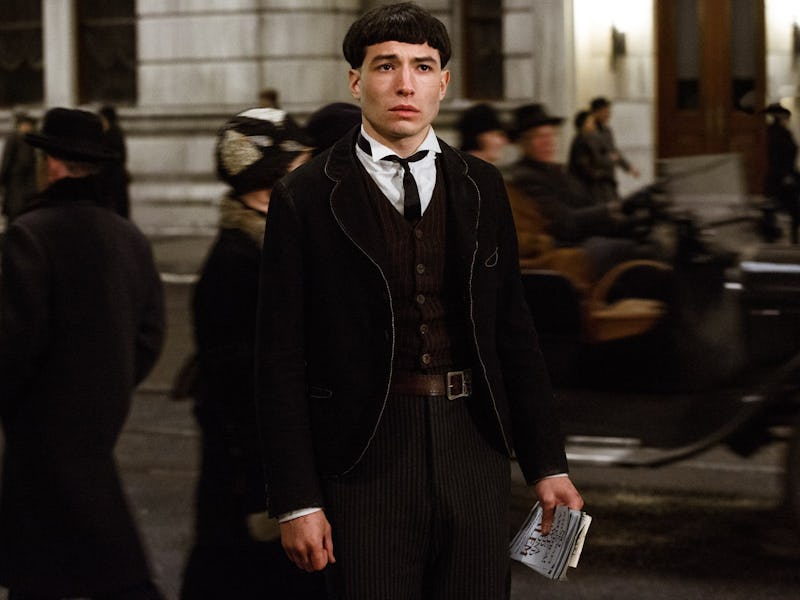'Fantastic Beasts' Reveals the Story of Dumbledore's Sister
How the Obscurus connects 'Fantastic Beasts' to 'Harry Potter' and spells out the franchise's future.

Although Albus Dumbledore does not appear in Fantastic Beasts and Where to Find Them beyond a name drop, his absence is a tangible onscreen presence. The film expands on a major puzzle piece to his past that we learn about in Harry Potter and the Deathly Hallows: the death of his sister.
Recall that the Dumbledore siblings consist of Albus, Aberforth, and their volatile and troubled sister Ariana. As Harry learns from Aberforth, Ariana died in an accident at the age of fourteen. Albus and Aberforth were present, as was Albus’s friend, crush, and future terror of the wizarding world Gellert Grindelwald.
The incident was so traumatic that it caused a rift between Albus and Aberforth, destroyed Albus’s friendship with Grindelwald, and burdened Albus with a terrible guilt he’d carry around forever. Although Aberforth explains why Ariana was so volatile in Deathly Hallows, the explanation was always rather vague:
When my sister was six years old, she was attacked, by three Muggle boys. They’d seen her doing magic, spying through the back garden hedge: She was a kid, she couldn’t control it, no witch or wizard can at that age. What they saw, scared them, I expect. They forced their way through the hedge, and when she couldn’t show them the trick, they got a bit carried away trying to stop the little freak doing it. It destroyed her, what they did: She was never right again. She wouldn’t use magic, but she couldn’t get rid of it; it turned inward and drove her mad, it exploded out of her when she couldn’t control it, and at times she was strange and dangerous…
This “danger” was what killed their mother. In the Harry Potter books, we hadn’t met any other witch or wizard who suppressed their magic. The story of Ariana Dumbledore seemed like an isolated — albeit tragic — occurrence back then. But Fantastic Beasts not only gives us a name for Ariana’s condition, it also gives us a visual for exactly what happened when she became “strange and dangerous.”
Like Ezra Miller’s character Credence, Ariana was an Obscurial, the host of an Obscurus, an unstable force that arises when a young witch or wizard suppresses their magic. Although the two suppressed it for different reasons — Ariana was traumatized by her attack; Credence was traumatized by his mother and the adults in his life — the end result is the same. When Ariana accidentally killed her mother, we now know exactly what that “explosion” that Aberforth describes looks like.
While it’s nice to have more details about the past of the Potter universe, that’s not the only significance to this information. It also affects the next four movies in the Fantastic Beasts franchise. Grindelwald’s interest in Credence suggests that Ariana’s death stuck with him just as much as it stuck with Dumbledore. At best, he feels some degree of guilt for her death. At worst, he wants to harness such a potent magical force for himself. Either way, we have not seen the last of an Obscurus, especially because we know they have been in J.K. Rowling’s mind since 2001, when she initially published the “textbook” Fantastic Beasts and Where to Find Them under the fake publisher “Obscurus Books.”
Credence and Graves who is secretly Grindelwald
Further, since Dumbledore himself will appear in the second movie, fans are already theorizing that Newt’s mission to New York might have been commissioned by Dumbledore himself, which is why he has an Obscurus in his case. That detail will remain to be seen, but it would connect Newt to the story in a more intriguing way than simply writing an adorable encyclopedia and sharing a tragic love with a complicated witch.